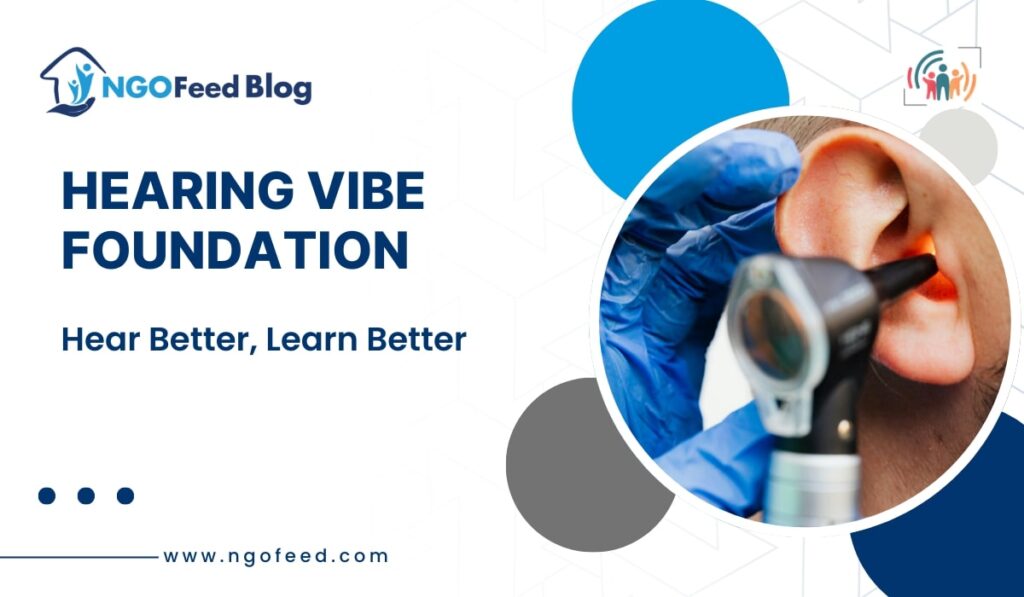Hearing Vibe Foundation 10 Eye-Opening Insights: Introduction to Unattended Hearing and Ear Problems Hearing is a cornerstone of learning. From the moment a child enters the classroom, they rely heavily on their ability to listen, process information, and respond. Unattended hearing and ear problems whether mild, moderate, or severe can quietly erode these abilities, impacting not only academic performance but also self-confidence and social development.
Unfortunately, many students struggle in silence because their hearing issues remain undetected. Definition and Types of Hearing & Ear Problems Hearing and ear problems in children can range from temporary blockages caused by earwax to chronic conditions like sensorineural hearing loss.
Table of Contents
Common categories include
- Conductive Hearing Loss – Blockages or damage in the outer/middle ear prevent sound from reaching the inner ear.
- Sensorineural Hearing Loss – Damage to the inner ear or auditory nerve.
- Mixed Hearing Loss – A combination of both types.
- Auditory Processing Disorders – Difficulty in interpreting sounds despite normal hearing tests.
Common Causes of Hearing Loss
Common Causes of Hearing Loss in Children and Adolescents Several factors contribute to hearing problems, including: Ear infections (otitis media) Exposure to loud noise Congenital defects Head injuries Untreated earwax buildup Side effects of certain medications
The Silent Struggle
Why Hearing Issues Go Unnoticed Many children don’t realize they have a hearing issue—especially if it develops gradually. This makes early detection tricky. Social and Cultural Factors Behind Undiagnosed Ear Conditions In some communities, hearing loss is considered a minor inconvenience rather than a serious health concern, leading to delayed diagnosis.
The Role of Limited Access to Audiology Services Rural areas and underfunded schools often lack regular hearing screenings, leaving problems to fester unnoticed. How Hearing and Ear Problems Affect Academic Performance A child’s ability to learn is deeply tied to their ability to hear. When this ability is compromised, the ripple effect is significant. Impact on Language Development and Vocabulary Growth Hearing loss reduces exposure to spoken language, slowing vocabulary expansion and grammatical understanding.
Difficulty in Following Classroom Instructions
Difficulty in Following Classroom Instructions Students with undetected hearing issues may miss critical instructions, leading to incomplete assignments and lower grades. Decline in Reading, Writing, and Comprehension Skills Poor auditory input hampers phonics learning, spelling, and reading comprehension. Reduced Participation in Group Activities and Discussions Fear of misunderstanding peers can make children withdraw from group interactions, impacting collaboration skills.
Psychological and Social Impacts
Psychological and Social Impacts of Unattended Hearing Issues Low Self-Esteem and Isolation in School Settings When a child consistently struggles to keep up, they may feel “less capable” than their peers. Increased Risk of Behavioral Problems and Misdiagnosis Hearing problems can mimic attention deficit disorders, leading to misdirected interventions. Unattended hearing loss and their impact on the academic performance Scientific Studies Linking Hearing Health and Academic Outcomes Key Research Findings from Educational Psychology Studies show that children with mild hearing loss can score 20–40% lower on standardized tests compared to peers with normal hearing.
Statistics on Hearing Loss Prevalence in Students According to the World Health Organization, over 34 million children worldwide live with disabling hearing loss—many undiagnosed. Early Detection and Intervention Strategies School-Based Hearing Screenings Annual screenings can detect problems early, preventing long-term academic delays.
Role of Teachers
Role of Teachers in Identifying Early Warning Signs Teachers can watch for signs like frequent requests for repetition, inattentiveness, or confusion. Parental Awareness and Home Monitoring Parents should be alert to signs like high TV volume or complaints about muffled sounds. Treatment and Support Options Medical Interventions and Assistive Devices Hearing aids, cochlear implants, and medication for infections can dramatically improve academic engagement.
Classroom Accommodations and Special Education Support Preferential seating, FM systems, and captioned videos make learning more accessible. Prevention and Healthy Hearing Practices Protecting Children from Noise-Induced Hearing Loss Limit headphone volume and exposure to loud environments. Maintaining Ear Hygiene and Preventing Infections Regular ear check-ups and proper cleaning habits reduce risks.
Case Studies
Academic Recovery After Hearing Treatment Example: A 9-year-old diagnosed with mild conductive hearing loss improved from below-average reading scores to grade-level proficiency after six months of treatment and classroom adjustments.
Conclusion
Unattended hearing and ear problems and their impact on the academic performance cannot be underestimated. Hearing health is not just a medical concern—it’s an educational priority. With timely screening, effective treatment, and ongoing support, students can overcome these challenges and reach their full academic potential.
Frequently Asked Questions (FAQs)
1. How common are hearing problems in school-aged children?
Hearing loss affects about 2–5% of school-aged children, but many go undiagnosed.
2. Can mild hearing loss still affect learning?
Yes. Even slight hearing difficulties can cause misunderstandings and missed learning opportunities.
3. Are hearing screenings mandatory in schools?
This varies by country and state; some require annual checks, while others don’t.
4. Can untreated ear infections cause permanent damage?
Yes. Repeated infections can lead to chronic hearing loss.
5. What classroom accommodations help students with hearing issues?
Examples include seating near the teacher, use of assistive listening devices, and captioned educational videos.
6. Is hearing loss preventable?
Some causes are preventable—such as noise-induced damage—while others, like genetic conditions, are not.










